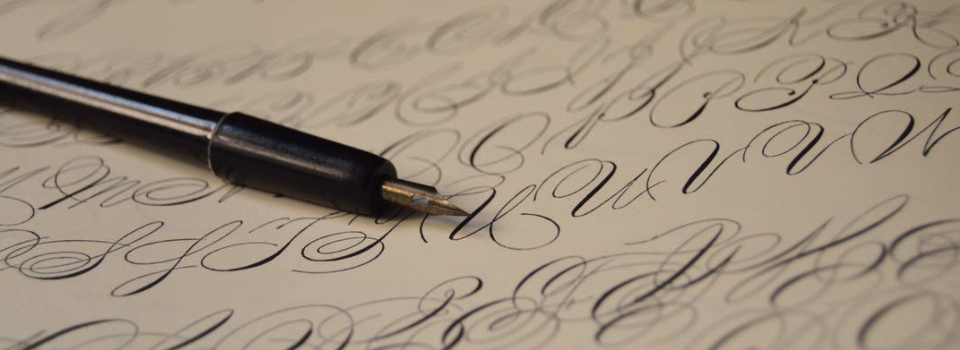Your Mac comes with a huge selection of pre-installed fonts, but if you firmly believe there’s no such thing as too much choice, then you can always install more!
In this article I’m going to cover everything you need to know, to add countless custom fonts to your Mac. We’ll look at where to find fonts, how to install them, and how to guarantee that your favourite fonts are always within easy reach, by organizing them into custom Collections.
Exploring macOS’ pre-installed fonts
macOS’ ‘Font Book’ provides a central hub where you can add, remove, organize and test every single font that’s available across your Mac.
You’ll find this application in your Mac’s ‘Applications’ folder.

To browse the available fonts, either select a ‘Collection’ from the left-hand menu, or select ‘All Fonts’ and scroll through the list.
Whenever you select a font in the left-hand menu, the right-hand Preview pane will display a preview of this font, so you can see exactly how text will appear when it’s rendered in this font.
By default, the Preview pane displays capitalised and uncapitalised A-Z letters, the numbers 0-9 and symbols, rendered in the selected font. This is ‘Sample’ mode, but there are two additional modes that you can access, by selecting ‘View’ from the Font Book toolbar, and then choosing from:
- Repertoire. Displays all the characters that are available in the currently-selected font, including some pretty obscure symbols.
- Custom. This option lets you enter your own message, phrase, or collection of characters that you want to use as your Preview text. Once you’ve selected this option, double-click the Preview pane and then enter the text that you want to use.
Making fonts available across multiple accounts
Before you start installing fonts, just be aware that by default these fonts will be available on your user account only.
To make these fonts available to everyone who uses your Mac:
- Select ‘Font Book > Preferences…’ from the Font Book toolbar.
- In the subsequent window, open the ‘Default Install Location’ dropdown, and select ‘Computer.’
Installing new fonts
While it’s still possible to purchase CDs that contain collections of fonts, it’s become far more common to download fonts from the Internet.
A quick Google search will reveal countless websites where you can download fonts for free, such as 1001 Free Fonts, Urban Fonts, and Dafont. You can also find fonts on art networks, such as Deviantart, which are particularly good sources of more elaborate or unusual fonts.
Once you find a font that you want to use, simply download it to your Mac and then:
- Unzip your font, if required.
- Double-click the font’s file (this typically has a .tff or .otf extension).
- Font Book will display a preview of this font. If the font is available in multiple typefaces, then you can preview these typefaces in the dropdown menu.
- If you’re happy to proceed, then click the ‘Install Font’ button.
Whenever Font Book installs a new font, it automatically validates that font and will inform you if it detects any problems, so if you don’t see an error message then this font is now ready to use!
Alternatively, if you have a folder that contains a large number of fonts, then you can save some time by installing these fonts en masse:
- Select ‘File > Add Fonts…’ from the Font Book toolbar.
- Navigate to the folder in question, and then click ‘Open’ to install all the fonts in this folder.
Organizing your fonts
If you’re starting to lose track of all the fonts you’ve installed, then it may help to organize these fonts into Collections.
Collections are a great way of bringing order to third-party fonts, but you can also create Collections from any combination of pre-installed and third-party fonts, making them ideal for ensuring all your favourite fonts are within easy reach.
To create a Collection:
- Select ‘Font > New Collection’ from the Font Book toolbar.
- This adds a new Collection to the left-hand menu. Give this Collection a name, and then hit the ‘Enter’ key on your keyboard.
- To add a font to this Collection, select that font in the left-hand menu and then drag it to where your Collection appears in the left-hand menu. Release this font, and it’ll be added to your Collection.
- Rinse and repeat for every font that you want to include in this Collection.
If you change your mind and want to remove a font from a Collection:
- Select the Collection in the left-hand menu.
- Select the font that you want to remove, and then press the ‘Delete’ key.
- Read the onscreen warning, and if you’re happy to proceed then click ‘Remove.’
Note that this removes the font from this specific Collection, and not from the system, so this font will still appear in the ‘All Fonts’ Collection.
Uninstall a Font
To uninstall a third-party font:
- In Font Book, select the font that you want to remove.
- Select ‘File > Remove Font Name Family’ from the Font Book toolbar.
- Read the onscreen warning, and if you’re happy to proceed then click ‘Remove.’
Note that you cannot uninstall system fonts, so if a font is refusing to disappear then chances are you’re trying to uninstall one of macOS’ pre-installed fonts!
Before you go
After spending over 20 years working with Macs, both old and new, theres a tool I think would be useful to every Mac owner who is experiencing performance issues.
CleanMyMac is highest rated all-round cleaning app for the Mac, it can quickly diagnose and solve a whole plethora of common (but sometimes tedious to fix) issues at the click of a button. It also just happens to resolve many of the issues covered in the speed up section of this site, so Download CleanMyMac to get your Mac back up to speed today.







Add Comment